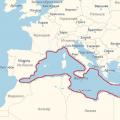How to properly manage the finances of your business if you are not an expert in financial analysis - The financial analysis
Financial management - financial relations between entities, management of finances at different levels, management of a portfolio of securities, techniques for managing the movement of financial resources - these are far from complete list subject " Financial management"

There are 54 countries in Africa and 10 best places to cover almost the entire territory of Russia when they are dragged to the site in accordance with the Mercator scale. These are: Algeria, Congo, Sudan, Libya, Chad, Niger, Angola, Mali, South Africa and Ethiopia.

After all, Africa is almost doubled more Russia. 
Now let's move on to North America. Can the US and Canada deal with Africa as they seem? By now, everyone already knows the answer. 
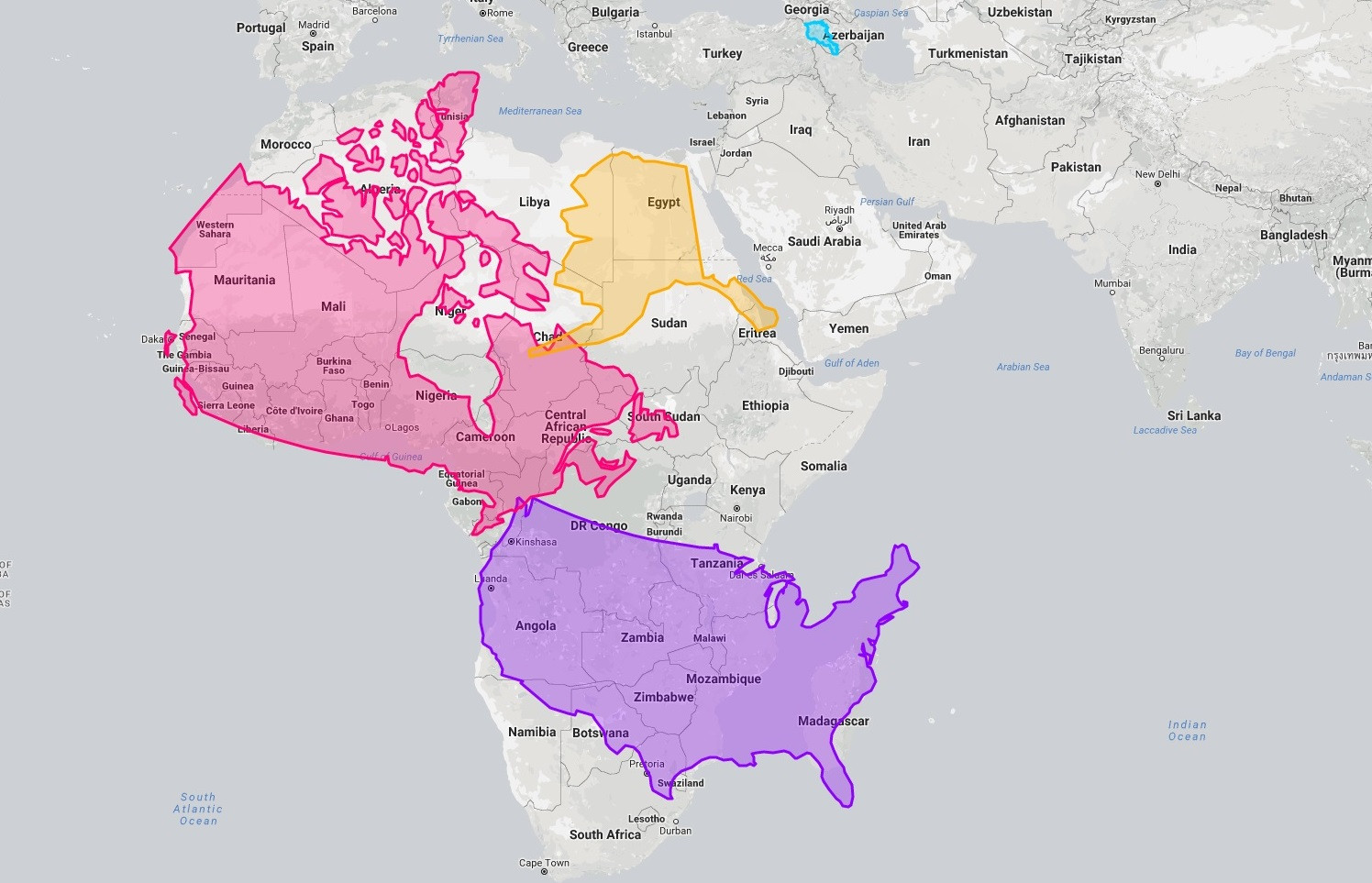
Then compare the second and third largest countries in the world, Canada and China. Country North America has a big advantage in representing Mercator.
Let's talk about what is coaching? Some believe that this is a bourgeois brand, others that it is a breakthrough from modern business. Coaching is a set of rules for a successful business, as well as the ability to properly dispose of these rules
12.3. Africa
industry
farms
Africa, together with the islands belonging to it (the largest of them is Madagascar) has an area of 30.3 million sq. km, the population is more than 750 million people.

Another glaring mistake seen when we cross Canada with China. In fact, both countries are practically the same - 9, 98 million km2 versus 9, 59 million. 
Brazil or Australia, which is the largest? 
Brazil is the fifth largest country in the world with a follow-up of 8.11 million Australia is soon to follow, with 7.19 million.
If you miss the answer, you don't need to feel embarrassed, it is the fault of the geography classes. 
Brazil is so vast that it covers most of Europe. 

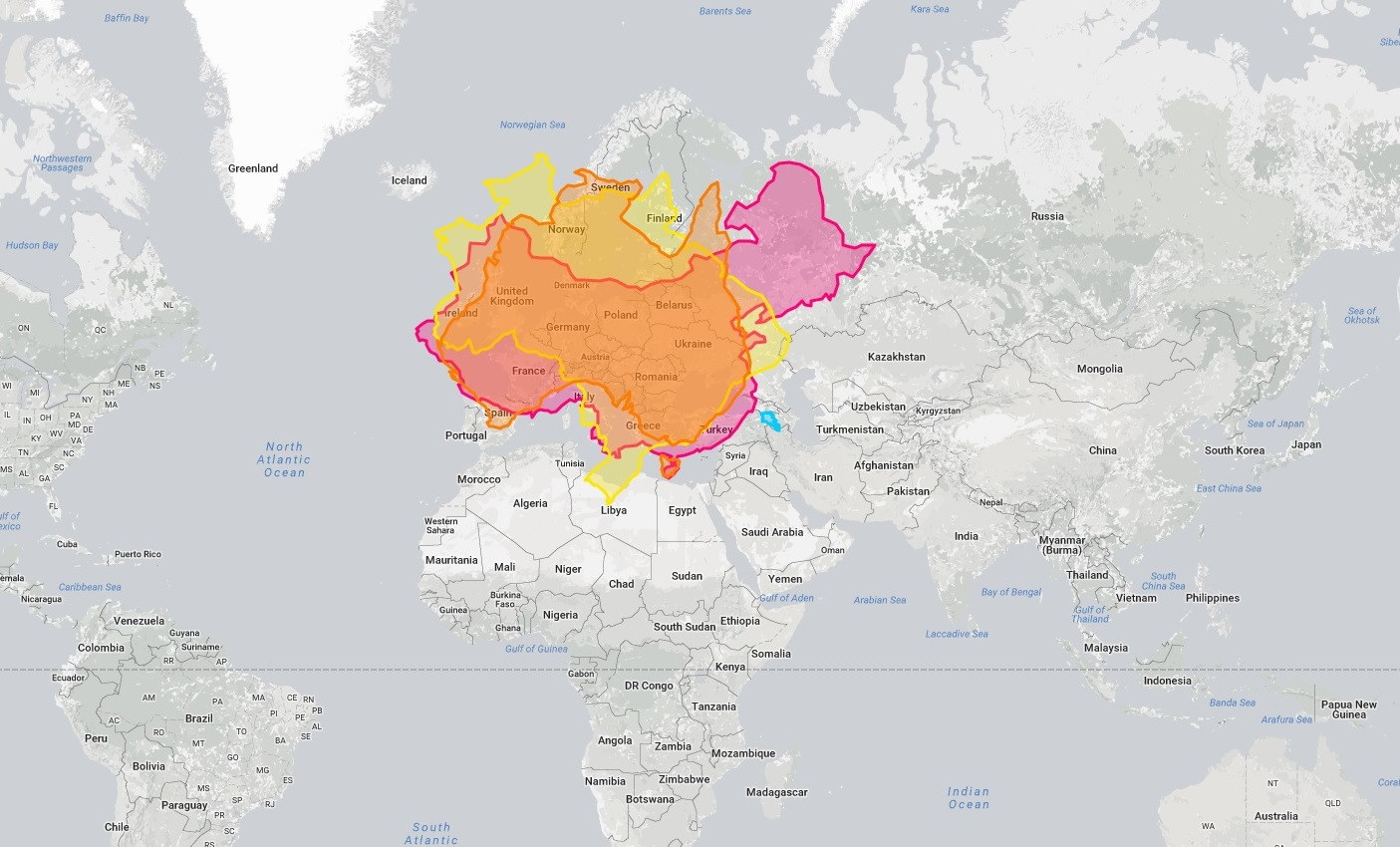
Europe is heavily oversized on the Mercator scale. When we catch up with Algeria, Congo and Sudan, the three largest African countries, very few remain.
In terms of the size of its territory, Africa surpasses all other large regions of the world, and in terms of the main indicators of economic and social development, it is significantly inferior to them. Africa ranks last in terms of industrialization, transport availability, health and science development, crop yields and livestock productivity.
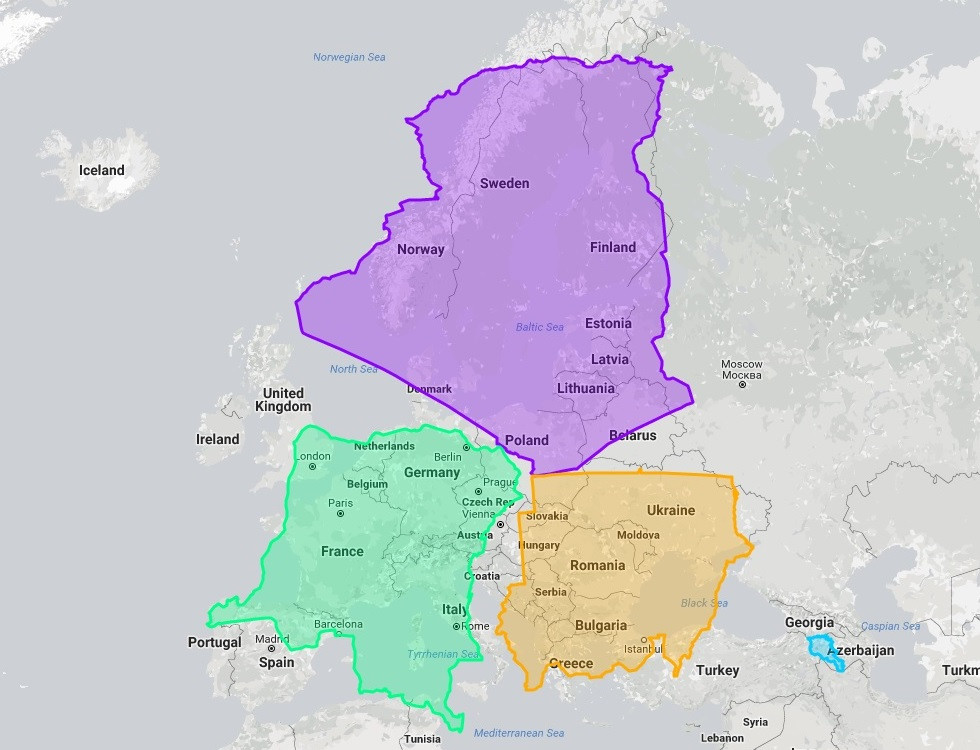
Now we are offering a descent to Antarctica. It's a huge mass of ice, but the distortion caused by the Mercator projection reaches its peak here. 
Yes, Antarctica is suitable for South America. 
Out of curiosity, we show you how the seven largest countries differ, proportionally, when aligned with the Equator. We have already mentioned the first six, and close - India, with 3.29 million.
In the international division of labor, Africa is represented by the products of the extractive industry, branches of tropical and subtropical agriculture. Its share is especially large in the world production of gold and diamonds, uranium and bauxite, phosphorites, coconuts in palm oil, coffee and cocoa.
Some geographic features of the region:

Speaking of India, keep in mind that it doesn't look that great since Greenland is in the Arctic. 
Well, now, the Gerardo Mercator scale can no longer deceive anyone. 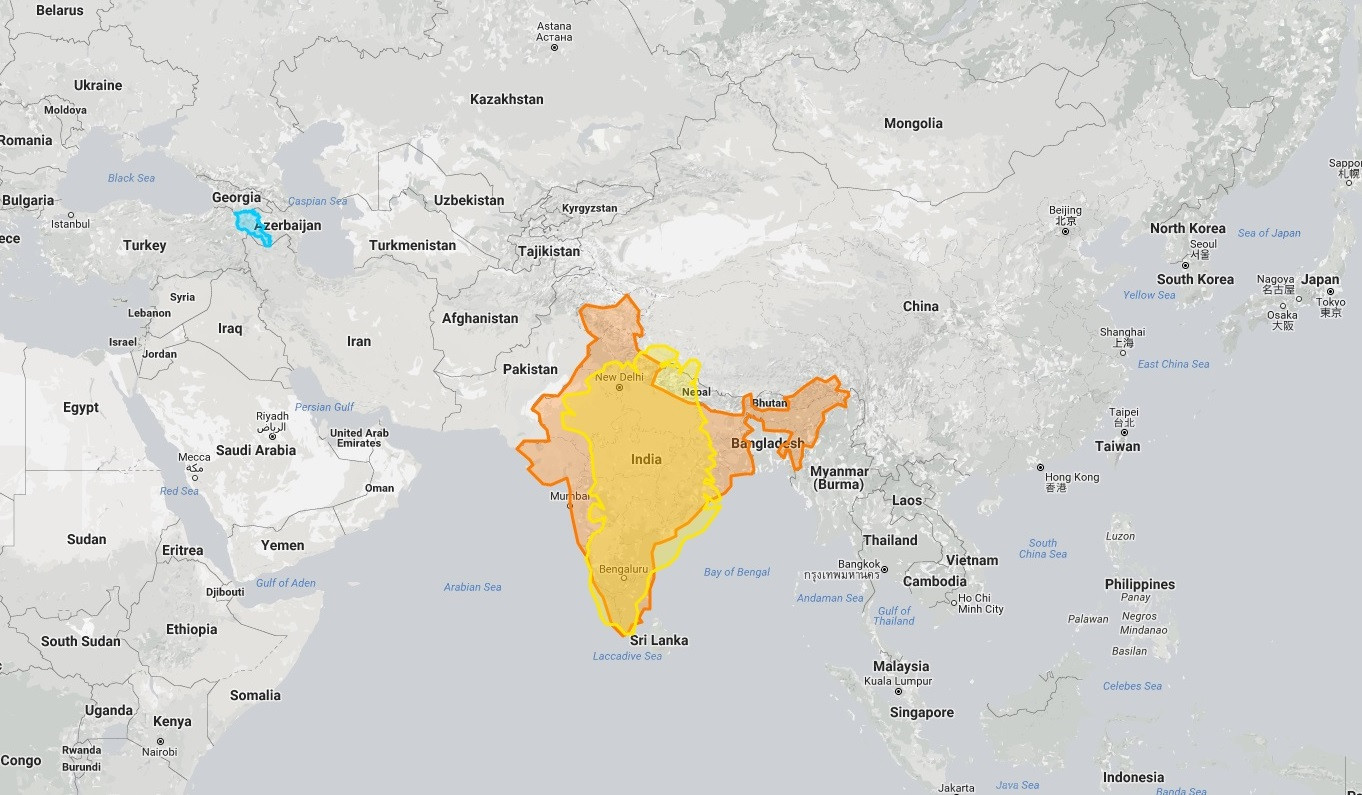
The more people on the planet, the more intense the competition for the use of its resources. Although the human population continues to grow, the progress made in recent decades is encouraging. Around the world, a woman now gives birth to 2.5 children on average, which is half the number in the early years. In 40 percent of countries in the world, the birth rate - the number of children born alive during a woman's life - is less than or equal to the "replacement" rate of 2.1 children per woman. offspring simply replace their parents.
1. Among other continents, Africa occupies a special geographical position. The equator crosses it almost in the middle and divides it into two parts, approximately equally located (to the north and south) in the equatorial, tropical and subtropical latitudes. Therefore, a huge amount of heat enters the entire territory of Africa evenly throughout the year, and the seasons in its northern and southern parts opposite: while in the northern hemisphere it is summer, in the southern hemisphere it is winter.
However, in Africa, women give birth to an average of 4.7 children each. The population is growing there almost three times faster than in the rest of the world. Most of 54 African countries the fertility rate remains high. Africans have always preferred large families with social status to have family labor able to work on land to compensate for the high mortality rate among children. early age... More than half of the 1.2 billion people living on this continent are children or adolescents, who promise rates of expansion that humanity does not have.At the end of this century, demographers predict that the number of inhabitants in Africa has tripled or quadrupled.
The nature of the geographical location provides the possibility of year-round navigation off the coast of Africa, since the seas washing it do not freeze.
The Strait of Gibraltar separating Africa and Europe (its distance is only 14 km) and the Suez Canal connecting the Mediterranean and Red Seas are of great importance for shipping. Many African countries are landlocked.
For many years, the African population as a whole was estimated at about 2 billion. Demographic models assumed that fertility rates would fall fairly quickly and steadily. These indicators have been slowly and steadily declining. Currently, the United Nations expects from 3 to 6, 1 billion Africans - dizzying numbers. Almost all of the unplanned growth comes from Africa. Most Africans live in countries that are not particularly well endowed with fertile soil, water or stable political regimes, and increased competition for food and jobs, are likely to create conflicts throughout the region and, as a result, put significant pressure on food. water and Natural resources around the world, especially if Africans leave their countries in large numbers - what is already happening: 37% of young people in sub-Saharan Africa say they want to emigrate to another country, mainly due to lack of jobs.
2. Africa is ahead of all other regions of the world in terms of pace natural growth population (more than 3% per year), as it stands out for its high birth rate. However, Africa is the region with the highest mortality rates. As a result, the age structure of the population is characterized by a high proportion (about 45%) of children and adolescents under 15 years of age.
With an average density of 25 people per 1 sq. km, the population is distributed very unevenly across Africa. The most densely populated sea coasts, coastal regions of South Africa, Zambia, Zaire and Zimbabwe. In these areas, the population density ranges from 50 to 1000 people per 1 sq. km. In the vast areas of the Sahara, Kalahari, Namib deserts, the population density barely reaches 1 person per 1 sq. km.
Africa needs a new approach to slow population growth, maintaining peace and security, improving economic development and ensuring environmental sustainability. This is usually done by investing in family planning without integrating them into other health services and by publishing government communiqués that say “smaller is better” in terms of family size.
The worst natural disaster in Africa
When it said that population growth was a problem, it was considered culturally flawed and politically controversial. International donors then shifted their targets to promote comprehensive reform medical care, including the fight against AIDS and other serious diseases.
Despite the world's highest rates of urbanization, Africa is inferior to other regions in terms of the share of urban population (about 30%).
Linguistically, half of the African population belongs to the Niger-Kordofan family, and a third to the Afrozian family. Residents of European descent make up only 1%.
3. Africa is characterized by significant population migration (external and internal). The main centers of attraction work force from the African continent are Western Europe and Western Asia (especially the Gulf countries). Within the continent, migration flows of labor mainly go from the poorest countries to the richer ones (South Africa, Nigeria, Cote d'Ivoire, Libya, Morocco, Egypt, Tanzania, Kenya, Zaire, Zimbabwe).
A sense of urgency needs to be awakened, and we need to overcome our fear of forbidden words and resume coordinated action to reduce the demographic trajectory. Research shows that in addition to ensuring that women have access to better measures, there are those that make sense for other laudable reasons: to give instructions to girls and women and to make their social and legal status equal to that of men. While some countries have taken some of these measures in isolation, a much more effective approach would be to integrate educational, economic, social and political action for women.
4. On political map Africa is represented by 55 states, the overwhelming majority of which are developing countries. The only economically developed country is South Africa. Among the countries, the overwhelming majority are republics (with the exception of Morocco, Lesotho and Swaziland, which are constitutional monarchies). The administrative-territorial structure of states, with the exception of South Africa and Nigeria, is unitary.
Despite economic and democratic progress, the continent's low life expectancy, slow development and high levels of poverty and malnutrition, many indicators confirm that the situation in Africa is already alarming.
Crop yields are among the lowest in the world. In southern Sahara, overgrazing by domestic animals favors desert adventures, pushing nomadic pastoralists into farmers' territory, while the population of both groups is increasing. Friction arose between Egypt and Ethiopia over the waters of the Nile when they were divided smoothly as a result of an agreement between the 11 countries of the Nile Basin.
5. Geopolitically and economically, Africa is divided into two parts: North Africa and Tropical Africa.
North Africa includes an area (about 10 million square kilometers with a population of 160 million people) adjacent to the Mediterranean, inhabited mainly by Arabs who profess Islam. The countries located on this territory (Algeria, Egypt, Western Sahara, Libya, Mauritania, Morocco, Tunisia), thanks to their geographic location(seaside, neighboring countries Southern Europe and Western Asia) and a higher (in comparison with the states of Tropical Africa) level of economic and industrial development, are distinguished by greater involvement in the international division of labor (export of oil, gas, phosphorites, etc.). Tropical Africa includes the territory located south of the Sahara, within which, in turn, Western, Central, East and South Africa are distinguished. The overwhelming majority of the population of the countries located on their territory belongs to the equatorial (Negroid) race. Ethnic composition The population is very diverse (there are more than 200 peoples), multinational states prevail. The main sphere of activity of the population is agriculture (with the exception of countries South Africa, in the economy of which industry and the service sector play a decisive role). Tropical Africa is the most economically backward, least industrialized and least urbanized part of the developing world. Of the 49 countries within its borders, 32 belong to the group of "least developed countries of the world". Per capita GNP in Eastern, Western and Central Africa several times (5-7 or more times) less than in the countries of North and South Africa.
Difficulties that can get worse
Competition for limited resources promotes civil war and terrorism. Some scholars attribute the rise of the Islamist armed group Boko Haram in Nigeria, at least in part, to a conflict between shepherds and farmers to control the Sakhalin bush. The lack of livelihood opportunities for adolescents and young people also fosters aggressiveness throughout Central Africa and creates migration movements.
Imagine what an Africa with 2 billion inhabitants might look like, let alone 6 billion. The story offers several clues. Yet even with these assets, large parts of this continent still face impoverished agricultural land, shrinking river basins, food insecurity and high level air pollution.
Economy: minerals, leading industries
industry
Extractive industries dominate in Africa's industry, the share of manufacturing industries is small, and many branches of modern industry (precision engineering, instrument making, machine tool construction, etc.) are generally absent.
Among other continents, Africa ranks first in reserves of diamonds, gold, platinum, manganese, chromite, bauxite and phosphorite. There are large reserves of coal, oil and natural gas, copper, iron, uranium, cobalt ores.
One of the great changes in Africa will be the proliferation of giant cities. This continent is rapidly urbanizing, and most people arriving from a dormant village are piling up in shacks, grabbing shelter and resources. Based on current projections, there will be hundreds of African slums in the middle of the century, each with hundreds of thousands of people.
The prospect of a crowded, urbanized, constantly clashing continent is beginning to worry African leaders, most of whom have traditionally fueled population growth. Unsurprisingly, access to family planning is one measure that is gaining new attention. Today, only 29 percent of married African women of childbearing age use modern contraception. On all other continents, the share is over 50%. Research also shows that more than a third of pregnancies in Africa are unwanted, and in sub-Saharan Africa, 58% of women aged 15-49 who are sexually active but do not want to get pregnant do not have modern contraception.
The main branches of the extractive industry are developed in the places of occurrence of the largest and most well-developed minerals:
South Africa is distinguished by the concentration of reserves and mining of coal (South Africa), gold (South Africa, Zaire, Zimbabwe, Tanzania) and diamonds (Zaire, South Africa, Botswana), manganese, chromium (South Africa), iron (Angola), copper (Zaire, Zambia and South Africa) and uranium (South Africa, Namibia) ores;
North Africa - phosphorites (Morocco, Algeria, Tunisia), oil and natural gas (Algeria, Libya);
Western Africa - bauxite (Guinea, Ghana, Cameroon), oil (Nigeria), iron (Mauritania, Liberia, Gabon) and uranium (Niger) ores.
The mining industry in Africa is weakly connected with other sectors of the economy, most of its products are exported. A few branches of heavy industry (smelting of copper, alumina and aluminum, the production of phosphorus and nitrogen fertilizers, mining equipment, the oil refining industry, etc.) occupy very modest positions in the economy of African countries.
Among the branches of the manufacturing industry, the textile and food industries have received the greatest development. Leading industries textile industry- production of cotton fabrics (ARE, Sudan, Algeria), food - production of vegetable oils (palm, peanut, olive), coffee, cocoa, sugar, wine, canned fish.
Economy: natural conditions, leading agricultural sectors
farms
The prevailing flat relief (the Atlas, Futa-Djallon, Cape and Drakonov mountains are located only on the outskirts of the continent), a high supply of thermal resources (the sum of active temperatures is 6,000-10,000 ° C), the presence of fertile soils (red-yellow, black, brown soil equatorial forests, brown soils of subtropics, alluvial soils of river valleys), vast natural pastures (areas of savannas, steppes and semi-deserts occupy about half of Africa's area) are favorable for various types of agricultural activities.
However, the conditions of moisture supply significantly limit the possibilities for the development of agriculture in this region. In almost 2/3 of Africa's territory, sustainable agriculture is possible only with land reclamation. In the equatorial region of Africa, where the amount of precipitation is 1500 mm or more per year, there is an excess of moisture, in the semi-deserts and deserts of the northern and southern hemisphere(Sahara, Namib, Kalahari) - on the contrary, its lack. The most favorable natural conditions for agriculture are the windward slopes of the Atlas and Cape Mountains, the Mediterranean regions, the eastern marginal regions of South Africa, where the amount of precipitation is 800-1000 mm per year.
The leading branch of agriculture in Africa is crop production. In the structure of crop production, two areas are distinguished: the production of food crops for local consumption and the production of export crops.
Crops consumed in African countries include millet, sorghum, rice, wheat, corn, cassava (or cassava), yams, and sweet potatoes (yams).
The main grain crops of the African continent, millet and sorghum, are cultivated almost everywhere. Corn is the main food crop of the savannah zone. Wheat crops are concentrated in North Africa and South Africa. Rice is mainly grown in the well-humid regions of East Africa (Nile Valley, Madagascar, etc.) - The scale of wheat and rice production does not cover the domestic needs of the region, so many African countries import wheat and rice.
The main export crops of Africa are coffee, cocoa, tea, cotton, peanuts, bananas, agave (sisal). Most of the coffee production is provided by Ethiopia and the Republic of Cote d "Ivoire, cocoa beans - Ghana and the Republic of Cote d" Ivoire, raw cotton - the countries of East Africa (Egypt, Sudan, Uganda, Tanzania, Mozambique), peanuts - Nigeria, Senegal.
Africa is a major supplier of coconut kernels and palm oil and olives to the world market. The oil palm is a culture of West and Equatorial Africa. The olive tree grows mainly in the countries of North Africa (Tunisia and others). The countries of North and South Africa produce citrus fruits (oranges, tangerines, lemons, grapefruits, etc.), tea, tobacco, and grapes.
Livestock production is characterized by low productivity. Nomadic, semi-nomadic and distant pasture animal husbandry prevails. The main branches of animal husbandry are sheep (wool and meat and wool), cattle (mainly meat), camel breeding.
Transport. The length of the railways is not long - vehicles cover larger areas. For some countries of Central and East Africa, the internal water transport... In terms of length and intensity of use, the basins of the Congo, Nile and Niger rivers stand out.
External transportation is carried out by sea transport. More than 90% of exports of African countries are mineral and agricultural raw materials and food. The main export items are oil (Nigeria, Libya, Algeria), copper (Zambia, Zaire), iron ore (Liberia, Mauritania), manganese ores (Gabon), phosphorites (Morocco), uranium (Niger, Gabon), cotton (Egypt, Sudan, Chad, Mali, Tanzania, etc.), coffee (Ethiopia, Angola, Rwanda, Burundi, etc.), cocoa beans (Ivory Coast, Ghana, Nigeria, etc.), peanuts (Senegal, Gambia , Sudan), olive oil (Tunisia, Morocco), tobacco (Malawi, etc.), citrus fruits, grape wines (Algeria, Tunisia, etc.).
African countries mainly import machinery and equipment, manufactured goods, and foodstuffs.
All rights reserved. The materials on this site can only be used with a link to this site.
Africa, together with the islands belonging to it (the largest of them is Madagascar) has an area of 30.3 million sq. km, the population is more than 750 million people.
In terms of the size of its territory, Africa surpasses all other large regions of the world, and in terms of the main indicators of economic and social development, it is significantly inferior to them. Africa ranks last in terms of industrialization, transport availability, health and science development, crop yields and livestock productivity.
In the international division of labor, Africa is represented by the products of the extractive industry, branches of tropical and subtropical agriculture. Its share is especially large in the world production of gold and diamonds, uranium and bauxite, phosphorites, coconuts in palm oil, coffee and cocoa.
Some geographic features region:
1. Among other continents, Africa occupies a special geographical position. The equator crosses it almost in the middle and divides it into two parts, approximately equally located (to the north and south) in the equatorial, tropical and subtropical latitudes. Therefore, a huge amount of heat enters the entire territory of Africa evenly throughout the year, and the seasons in its northern and southern parts are opposite: while in the northern hemisphere it is summer, in the southern hemisphere it is winter.
The nature of the geographical location provides the possibility of year-round navigation off the coast of Africa, since the seas washing it do not freeze.
The Strait of Gibraltar separating Africa and Europe (its distance is only 14 km) and the Suez Canal connecting the Mediterranean and Red Seas are of great importance for shipping. Many African countries are landlocked.
2. Africa is ahead of all other regions of the world in terms of natural population growth (more than 3% per year), as it stands out for its high birth rate. However, Africa is the region with the highest mortality rates. As a result, the age structure of the population is characterized by a high proportion (about 45%) of children and adolescents under 15 years of age.
With an average density of 25 people per 1 sq. km, the population is distributed very unevenly across Africa. The most densely populated sea coasts, coastal regions of South Africa, Zambia, Zaire and Zimbabwe. In these areas, the population density ranges from 50 to 1000 people per 1 sq. km. In the vast areas of the Sahara, Kalahari, Namib deserts, the population density barely reaches 1 person per 1 sq. km.
Despite the world's highest rates of urbanization, Africa is inferior to other regions in terms of the share of urban population (about 30%).
Linguistically, half of the African population belongs to the Niger-Kordofan family, and a third to the Afrozian family.
Residents of European descent make up only 1%.
3. Africa is characterized by significant population migration (external and internal). The main centers of attraction for labor from the African continent are Western Europe and Western Asia (especially the countries of the Persian Gulf). Within the continent, migration flows of labor mainly go from the poorest countries to the richer ones (South Africa, Nigeria, Cote d'Ivoire, Libya, Morocco, Egypt, Tanzania, Kenya, Zaire, Zimbabwe).
4. Africa is represented on the political map by 55 states, the overwhelming majority of which are developing countries. The only economically developed country is South Africa. Among the countries, the overwhelming majority are republics (with the exception of Morocco, Lesotho and Swaziland, which are constitutional monarchies). The administrative-territorial structure of states, with the exception of South Africa and Nigeria, is unitary.
5. Geopolitically and economically, Africa is divided into two parts: North Africa and Tropical Africa.
North Africa includes an area (an area of about 10 million square kilometers with a population of 160 million people) adjacent to the Mediterranean, inhabited mainly by Arabs who profess Islam. The countries located on this territory (Algeria, Egypt, Western Sahara, Libya, Mauritania, Morocco, Tunisia), due to their geographical position (coastal, neighboring in relation to the countries of Southern Europe and Western Asia) and higher (in comparison with the states Tropical Africa) level of economic and industrial development, are more involved in international division labor (export of oil, gas, phosphorites, etc.). Tropical Africa includes the territory located south of the Sahara, within which, in turn, Western, Central, Eastern and Southern Africa are distinguished. The overwhelming majority of the population of the countries located on their territory belongs to the equatorial (Negroid) race. The ethnic composition of the population is very diverse (there are more than 200 peoples), multinational states prevail. The main sphere of activity of the population is agriculture (with the exception of the countries of South Africa, in the economy of which industry and the service sector play a decisive role). Tropical Africa is the most economically backward, least industrialized and least urbanized part of the developing world. Of the 49 countries within its borders, 32 belong to the group of "least developed countries of the world". The per capita GNP in the countries of East, West and Central Africa is several times (5-7 times or more) less than in the countries of North and South Africa.

